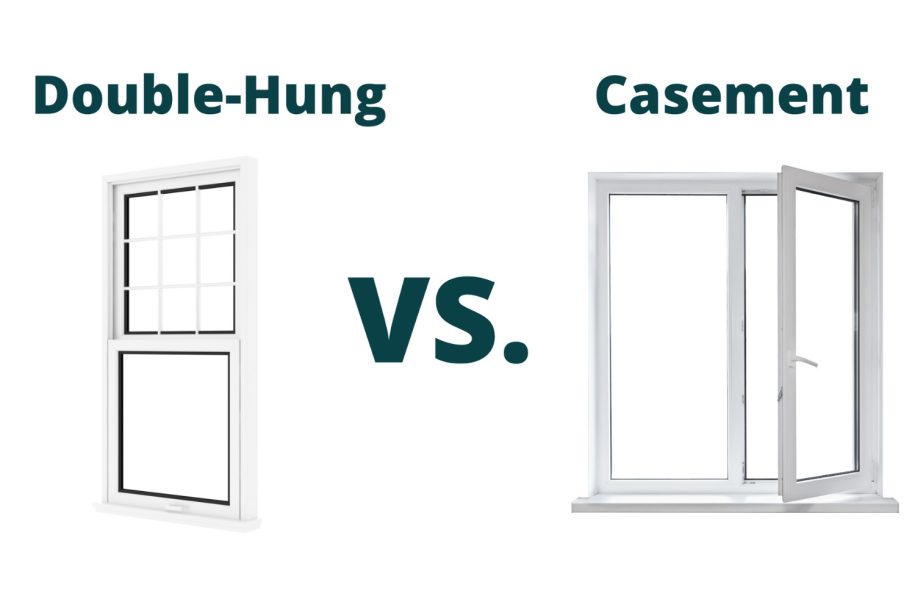Casement vs double hung—yep, that’s the question I wrestled with too. Standing in my living room, tape measure in one hand and a cold coffee in the other, I stared at my old windows thinking, “Okay, which one of you is finally getting replaced?”
Sound familiar?
If you’re caught between casement windows vs double hung, here’s the no-fluff, real-world breakdown. I’ve tested both styles, compared quotes, and seen the difference in airflow, cleaning, and—yep—cost. Let’s break it down like we’re just chatting on a Sunday morning over coffee.
Quick Answer: Casement or Double Hung? Depends on What You Actually Care About
-
Want a wide-open view and max airflow? Casement.
-
Prefer easy cleaning and traditional look? Double hung.
-
On a tighter budget? Double hung wins again.
-
Live in a super windy area? Probably avoid casement. That crank can rattle like your grandma’s screen door in a storm.
What’s the Real Difference Between Casement and Double Hung Windows?
Okay, real talk.
-
Casement windows: They swing open like a door. You use a crank, and the whole sash swings out sideways. It’s like opening a cabinet—but outside.
-
Double hung windows: They slide up and down. You can open the top, the bottom, or both at the same time.
Let’s Talk Money: Are Casement Windows More Expensive Than Double Hung?
Short answer: Yep. Longer answer: I got quotes from three different window companies.
-
For the same size window, the casement cost me 15–20% more every single time.
-
Why? More hardware. That crank system isn’t cheap.
-
But I’ll say this: in a small room where you want full airflow, it’s 100% worth it.
So if you’re asking are casement windows better than double hung, the real answer is: sometimes. Depends on the job.
Casement Windows vs Double Hung: Pros and Cons (No Sugarcoating)
Let’s be honest. Every window company will sell you their “top seller.” I care about what actually works.
Here’s the breakdown from someone who’s installed both:
Casement Pros
-
Full, top-to-bottom ventilation (feels like the air actually moves)
-
Modern look—clean lines
-
Easy to open over a kitchen sink (life saver)
-
Seals tighter—can help with energy bills
Casement Cons
-
More expensive (by a chunk)
-
That crank? It can break. Mine got stuck after two winters
-
Doesn’t do well in high-wind zones. Wind can yank it hard
Double Hung Pros
-
Classic look that works in almost any home
-
Cheaper to install
-
Both sashes tilt in = super easy to clean
-
You can open just the top if you’ve got kids or pets
Double Hung Cons
-
Only half opens at a time, so airflow is meh
-
Can leak air more easily over time
-
Sash balances can wear out (I’ve replaced mine once already)
Which One Did I Pick?
Honestly? Both.
-
Kitchen & bathroom – casement. I wanted full airflow, and cranks made sense above counters.
-
Living room & bedrooms – double hung. Cheaper. Easier to clean. Looks classic.
If you’re on a budget but still want good function: go double hung. If you’re upgrading one or two key areas: go casement.
FAQs: People Ask These All The Time
Q1: What is a casement window vs double hung?
Ans: casement opens outward like a door with a crank. A double hung slides up and down with two sashes.
Q2:Are casement windows more expensive than double hung?
Ans: Yes, usually 15–20% more expensive. Mostly due to hardware and tighter sealing.
Q3:Which lasts longer: casement or double hung?
Ans: Both last years if you maintain them, but double hung windows are usually easier (and cheaper) to repair.
Final Thoughts: Double Hung vs Casement? It’s Like Choosing Between Coffee and Tea
They’re both good.
They both have their place.
It’s just about how you use them.
If you’re still stuck choosing between Columbus Exterior for casement vs double hung windows, here’s the move: Get quotes for both. Look at the airflow in your space. Think about who’s using the window (kids? elderly? tenants?). And always ask yourself—what’s gonna annoy me less in 5 years?

